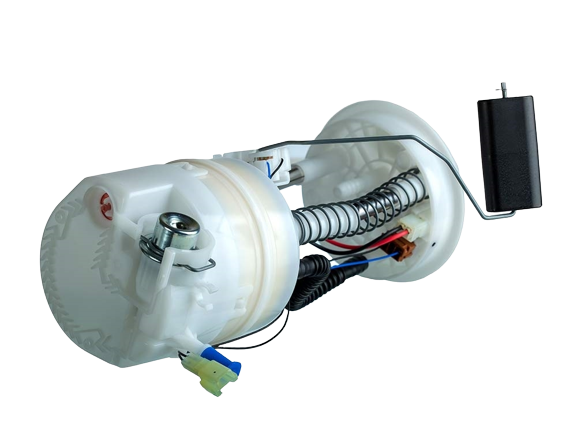How Does A Fuel Pump Work

Understanding How Your Vehicle's Fuel Pump Works: Electric & Mechanical
To simply explain a fuel pump, the sole responsibility and purpose is to specifically inject the fuel from your vehicle's fuel tank into the engine. Without a functional fuel pump your vehicle will result in an undrivable condition. A failing fuel pump can cause poor fuel distribution and overheating - this happens without sufficient fuel supply to accommodate the necessary pressure.
How Does A Fuel Pump Work Actually Work?
Before understanding how your vehicle's fuel pump functions, it is important to know what a fuel pump really consists of. Your vehicle's fuel pump is designed to deliver the appropriate amounts of fuel that the necessary applied pressure requires. The fuel pump of your vehicle can be found in the engine compartment next to the carburetor for easy fuel distribution.
Down below is an explanation of the different types of fuel pumps and how they function.
The Difference Between Mechanical And Electric Fuel Pump And How Each Functions?
Mechanical Fuel Pump:
Your vehicle's fuel pump consists of many smaller parts that are designed with specific functions. Included is a lever that continuously works in an up and downward motion, while the diaphragm of the fuel pump only works in downward motions. The pump chamber requires refilling that is supplied by the diaphragm that works to push down. The function of the return spring is to apply pressure to the diaphragm to supply the carburetor with fuel.
The mechanical fuel pump of your vehicle is powered by the camshaft (or an alternative special shaft) that is then powered by the crankshaft. When the shaft of your fuel pump begins to rotate, the cam lobe goes through the pivoted lever forcing a higher end on one side. The lever on the opposite side is connected to the diaphragm with rubber, which creates a flooring within the pump. This flooring pushes down onto the diaphragm to deliver fuel to the one way valve of the pump.
When the cam lobe begins to move further, lever contact is avoided. The lever is then relaxed on diaphragm, as the return spring is moved back. In this sense the opposite lever no longer pushes the diaphragm, instead the return spring now pushes. The diaphragm now moves in one direction with fuel from one valve out another to the carburetor. Only the required amount of fuel is taken into the carburetor through a needle valve from the float chamber.
When your vehicle's carburetor has enough fuel your needle valve closes so that no fuel exits the pump. This means that the diaphragm will remain low, while the lever idles in an up and down motion. When the carburetor increases fuel consumption, the diaphragm is picked up by the return spring. This makes up for the weak linkage, allowing contact again with the lever,refilling fuel in the chamber pump.
Electric Fuel Pump Function:
The diaphragm mechanism found in your vehicle's electric fuel pump is similar to the one found in a mechanical pump. This type of fuel pump functions with a rod that connects to a solenoid switch that opens to turn off power. An electric fuel pump shares similarities with a mechanical pump through the diaphragm and valve set up, however in place of a camshaft, a solenoid provides motion to the diaphragm. The iron road of your electric pump causes the diaphragm to move in a downwards direction, to deliver fuel within the chamber pump. When enough fuel has entered the chamber, then iron rods create a set of contacts that breaks the electromagnetic power. This then relaxes the diaphragm.
If you have enjoyed reading this article on fuel pumps and want to find out more, visit AfricaBoyz Online to browse through available fuel pump parts and prices. Although, if you currently have a faulty fuel pump and are unable to drive, delivery can be made to your doorstep.
